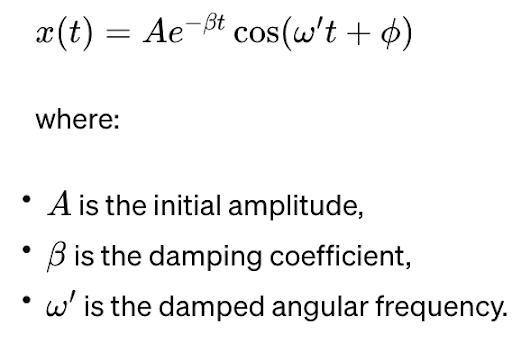Oscillatory motion is a fundamental concept in physics, describing repetitive back-and-forth movement around a central point. Two important variations of oscillatory motion are undamped and damped oscillations. Understanding the characteristics and behaviour of these motions is crucial in various scientific and engineering applications.
I. Undamped Oscillatory Motion:
Definition and Characteristics:
Undamped oscillatory motion refers to a repetitive back-and-forth movement without any external force acting against it. In other words, there is no energy loss during each oscillation cycle. The system continues oscillating indefinitely with a constant amplitude and frequency.
Mathematical Representation:
The motion of an undamped oscillator can be mathematically described by the simple harmonic motion (SHM) equation:
x (t) = A cos (ωt + ϕ)
where:
- x (t) is the displacement at time t,
- A is the amplitude of the oscillation,
- ω is the angular frequency,
- ϕ is the phase angle.
Energy Conservation:
In undamped oscillatory motion, the total mechanical energy of the system remains constant. The kinetic and potential energy exchange back and forth, resulting in a perpetual motion as long as no external forces are acting on the system.
II. Damped Oscillatory Motion:
Definition and Characteristics:
Damped oscillatory motion involves an external force or damping factor that reduces the amplitude of the oscillation over time. Unlike undamped motion, energy is gradually dissipated, causing the system to come to rest eventually.
Mathematical Representation:
The damped harmonic motion equation can be expressed as:

Energy Dissipation:
In damped oscillatory motion, the total mechanical energy of the system decreases over time due to the damping force. This results in a gradual decay of the amplitude until the system reaches equilibrium. The rate of energy loss is determined by the damping coefficient.
Types of Damping:
There are three main types of damping:
- Underdamping: The system oscillates with decreasing amplitude but does not reach equilibrium immediately.
- Critical Damping: The system reaches equilibrium as quickly as possible without oscillating.
- Overdamping: The system takes an extended time to reach equilibrium, oscillating very little.
Conclusion:
Undamped and damped oscillatory motions represent two contrasting behaviours in oscillation phenomena. While undamped motion demonstrates perpetual oscillation with constant energy, damped motion involves the dissipation of energy, leading to eventual equilibrium. These concepts are vital in fields such as physics, engineering, and applied mathematics, where a deep understanding of oscillatory behaviour is essential for designing and analysing various systems.




